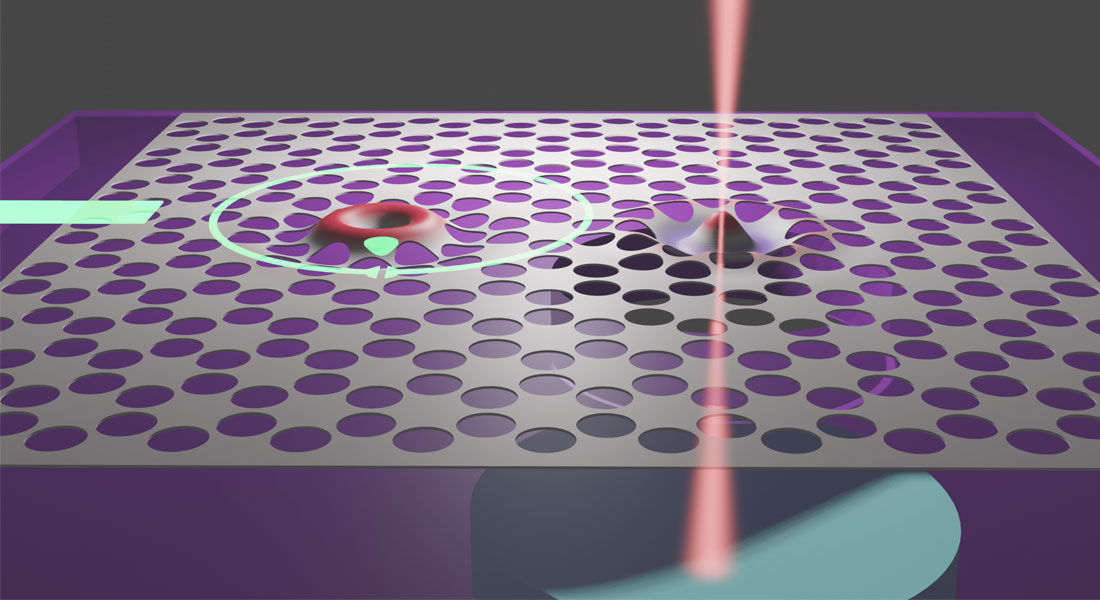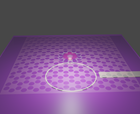Quantum Transduction
have demonstrated very efficient quantum protocols over the years, their fragile quantum states have yet been trapped at the bottom of cryostats. On the other hand, optical fibers can transport a quantum state over kilometers without loosing its salient features.

At SLAB, we are developing a platform to transduce quantum information from microwave to optics by coupling an ultracoherent mechanical resonator to both an optical and a microwave cavity.
In order to do that, we use a double defect soft-clamped membrane[1] to couple one defect to an optical mode and one defect to a microwave resonator.
 By metallizing a defect of such membrane, we were able to couple it to a microwave cavity and use this cavity to actively cool this resonator close to its ground state of motion[2], thus demonstrating for the first time an ultracoherent (coherence time > 100ms) resonator in its ground state of motion.
By metallizing a defect of such membrane, we were able to couple it to a microwave cavity and use this cavity to actively cool this resonator close to its ground state of motion[2], thus demonstrating for the first time an ultracoherent (coherence time > 100ms) resonator in its ground state of motion.

On the other hand, placing such a membrane in a Fabry-Pérot cavity, we were able to demonstrate optical entanglement between two propagating laser beams at different frequencies, mediated via the mechanical oscillator[3].
Combining those two techniques using a double defect membrane, one defect coupled to an optical cavity, the other to the microwave cavity, and both coupled together owing to their short distance, could enable the first ever demonstrated quantum transducer with high transduction and an added noise below unity.
Furthermore, the extreme coherence of the mechanical resonators used in this project can be used for quantum memory applications.
[1]Catalini, L., Tsaturyan, Y., Schliesser, A., Phys. Rev. Applied 14, 014041 (2020)
[2] Seis, Y., Capelle, T., Langman E., Saarinen S., Planz E., Schliesser, A., arxiv:2107.05552
[3]Chen, J., Rossi, M., Mason, D. et al., Nat Commun 11, 943 (2020)
